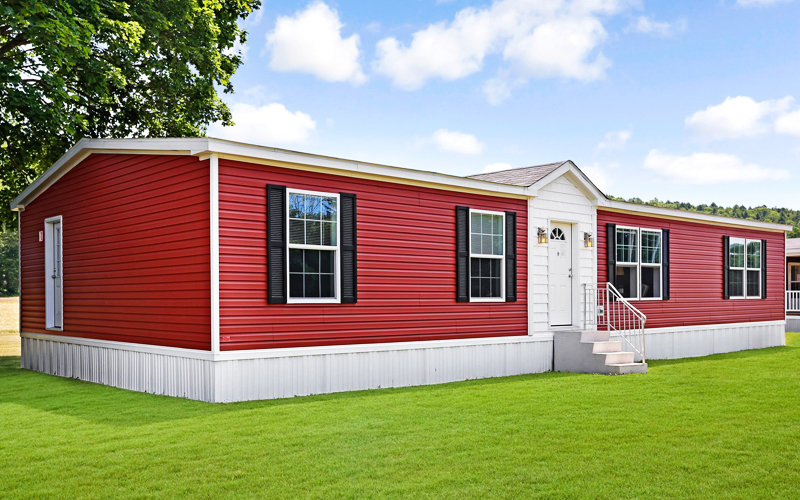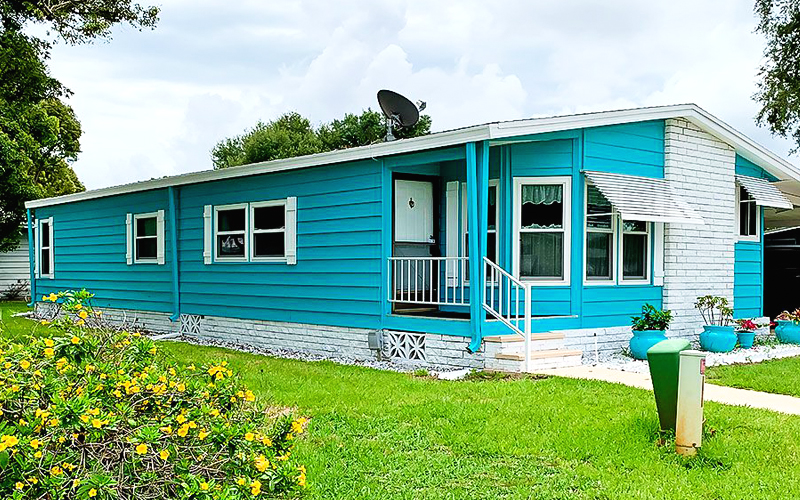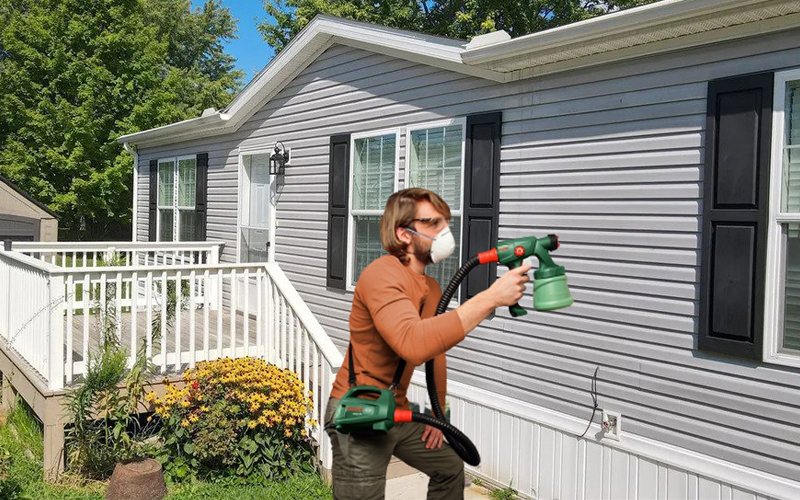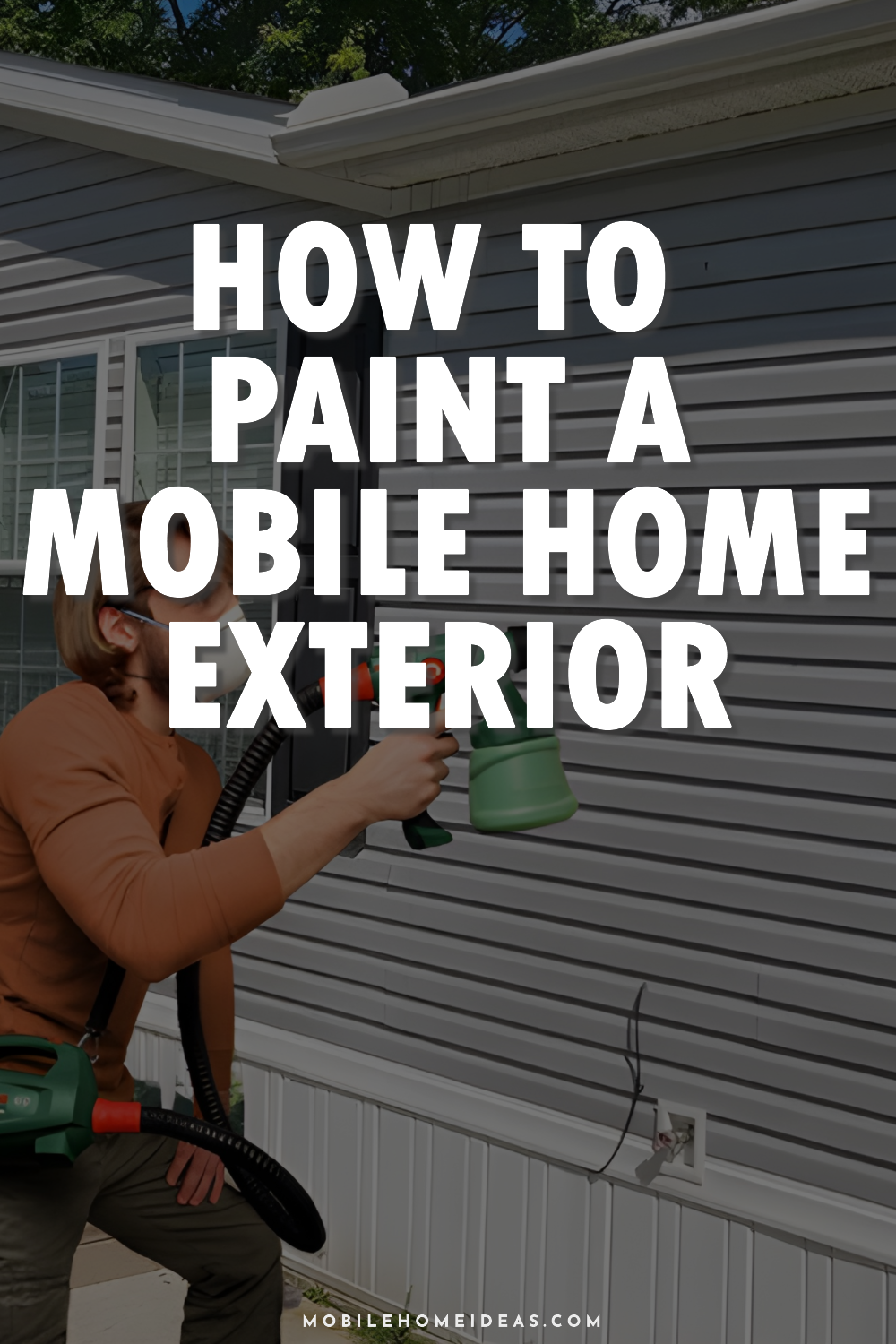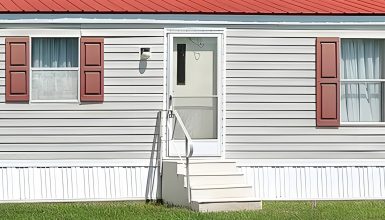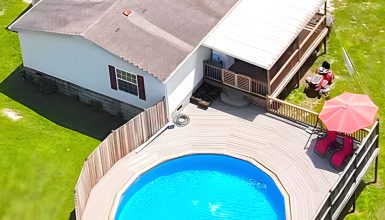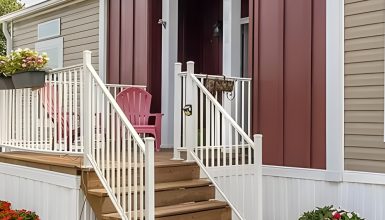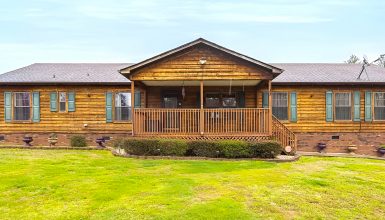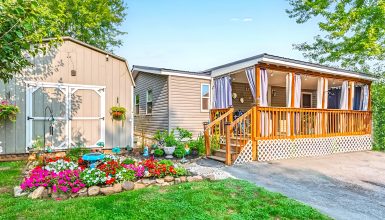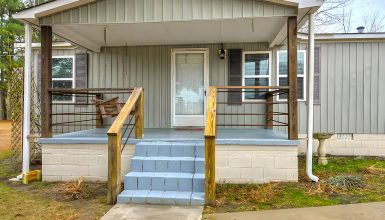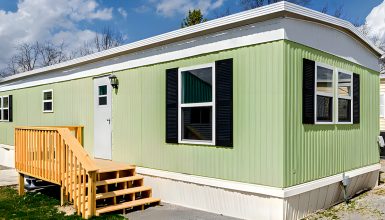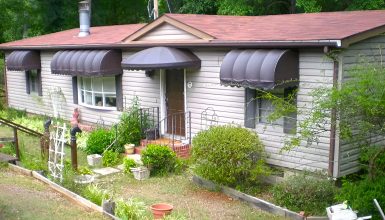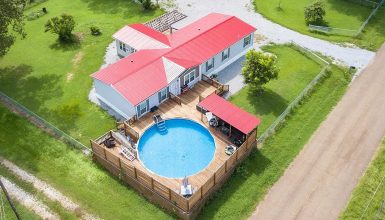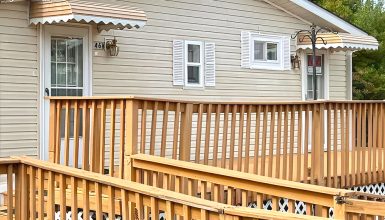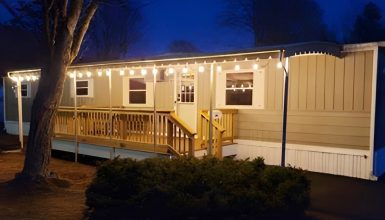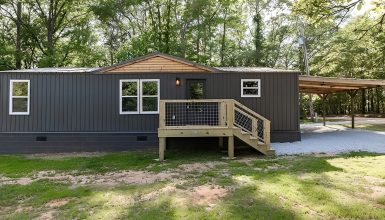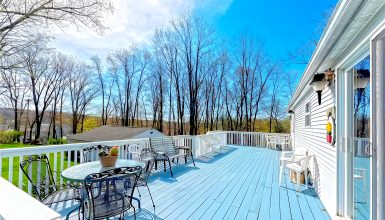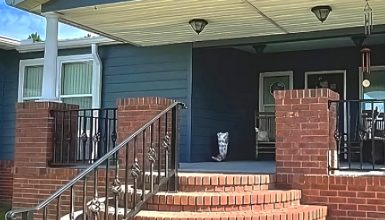Mobile home exterior painting can be a big project, but the result is worth it. Not only will it improve the appearance of your home, but it will also protect it from the elements and increase its value. The right exterior paint can do wonders for your mobile home. And the good news is you don’t have to be a professional painter to get the job done. This guide will cover the best exterior paint for mobile homes, whether vinyl or aluminum siding. And we’ll also walk you through the steps to paint your mobile home like a pro. So, let’s get started!
Best Exterior Paint for Mobile Homes
When choosing the best exterior mobile home paints, there are a few things you need to keep in mind. The type of siding, the climate and exposure conditions, and the desired level of durability and resistance to the elements are just a few of them.
- Vinyl Siding Paint
First, let’s talk about vinyl siding. If you have a mobile home with vinyl siding, you want to choose a paint that will stick to it and resist fading, chalking, and cracking. The best option for you is 100% acrylic latex paint. You can use paint specifically for exterior and vinyl siding like Sherwin-Williams VinylSafe®, Behr Marquee, and Benjamin Moore ben Exterior Paint.
- Aluminum Siding Paint
Now, if you have aluminum siding, you have a few options. Oil-based paint and 100% acrylic latex paint are both great options that can handle the expansion and contraction of aluminum siding in extreme temperatures. Some paints were best for aluminum sidings, like Sherwin Williams® WeatherShield, Valspar® SeasonFlex, and Rust-Oleum® Flat Metal Primer.
No matter what type of siding you have, choose a paint labeled for exterior use and appropriate for your home siding. Don’t skimp on quality; choose the tint with suitable durability and resistance to the elements for your climate and exposure conditions.
Paint Colors for Exterior Mobile Homes
Paint colors for the mobile home exterior vary based on personal preference and style, but some popular choices include:
- Neutral shades such as beige, gray, and white can complement most mobile home styles and provide a classic, timeless look.
- Earthy shades such as taupe, sage green, and light brown can blend in with the natural surroundings and give the home a warm and inviting feel.
- Bold and bright colors such as blue, yellow, and red can make a statement and add a fun and playful touch to the home.
- Dark shades such as navy blue, forest green, and black can create a dramatic look and give the home a classic, elegant feel.
When choosing a paint color, it’s essential to consider the surrounding landscape, as it can significantly impact the overall appearance of your home.
How to Paint a Mobile Home Exterior
Okay, so you’ve chosen the best paint and color for your mobile home. What’s next? It’s time to get your hands dirty! But don’t worry. We will be with you every step of the way.
Step 1: Clean the surface
Cleaning the surface of your mobile home before painting is a crucial step in the process. Removing any dirt, grime, or other debris that may affect paint adhesion is essential. Here’s what you need to do:
- Fill a bucket with a solution of warm water and mild soap. You can use a commercial cleaner specifically designed for exterior surfaces or a solution of water and mild dish soap.
- Use a soft-bristled brush or a large, non-abrasive sponge to scrub the surface. Make sure to reach all nooks and crannies, especially areas with accumulated dirt or grime over time.
- Rinse the surface thoroughly with a pressure washer. Remove all soap residue, as this can also affect paint adhesion.
- Allow the surface to dry completely. It may take several hours, depending on the weather conditions.
Step 2: Repair any cracks and dents
Repairing any cracks, dents, or other damage to your mobile home’s surface is crucial in preparing for painting. Not only will it help improve the overall appearance, but it will also protect your home from further damage. Here’s what you need to do:
- Inspect the surface for any cracks, dents, or other damage. If you find any, make a note of their location and size.
- Clean any debris or dirt from the damaged area with a damp cloth.
- Fill in cracks or dents with exterior-grade wood, epoxy filler, or vinyl siding repair patches. Apply the filler with a putty knife, making sure to smooth out any rough edges.
- For gaps or holes, use exterior-grade caulk. Apply the caulk with a gun and smooth the rough edges with a damp finger or a smoothing tool.
- Allow the filler and caulk to dry completely. It may take several hours, depending on the weather conditions.
- Sand the repaired areas with fine-grit sandpaper to make them even with the surrounding surface.
By repairing any cracks, dents, or other damage to your mobile home, you’ll be giving the paint a smooth surface to adhere to the siding. It will ensure a professional-looking finish and help protect your home from further damage.
Step: 3: Sand down any rough spots and prime the surface
Sanding down rough spots and priming the surface is crucial in preparing your mobile home for painting. It helps to create a smooth and even surface for the paint to adhere to, and it helps to protect the surface from moisture and other elements. Here’s what you need to do:
- Inspect the surface for any rough spots or areas that are not smooth. If you find any, sand them down with fine-grit sandpaper.
- Clean the surface thoroughly with a damp cloth to remove any sanding dust or debris.
- Choose a primer compatible with the paint you have chosen and the surface material of your mobile home (e.g., vinyl or aluminum siding).
- Apply the primer with a paint sprayer, following the manufacturer’s instructions for application. Make sure to apply an even and consistent coat, covering all areas of the surface.
- Allow the primer to dry completely. It may take several hours, depending on the weather conditions.
By sanding down rough spots and priming the surface of your mobile home, you’ll create a smooth surface to which the paint must adhere. It will help to ensure a professional-looking finish and help protect the surface from moisture and other elements.
Step 4: Paint the surface
Painting the surface of your mobile home is the final step in giving it a fresh new look. An airless paint sprayer can achieve a smooth and even finish without any brush marks or drips. Here’s what you need to do:
- Choose a paint compatible with both the surface material of your mobile home and the primer you used (e.g., exterior paint for vinyl or aluminum siding).
- Fill the paint sprayer with paint, following the manufacturer’s instructions for your specific model.
- Start at the top of the surface and work your way down, overlapping each pass to ensure even coverage.
- Move the sprayer in a steady and consistent motion, holding it 12 inches from the surface.
- Allow the paint to dry completely. It may take several hours, depending on the weather conditions.
- Repeat the process, if necessary, to apply a second coat of paint.
Step 5: Clean up any spills
After completing the painting, cleaning up is essential to avoid any issues with the finish. Here’s what you need to do:
- Clean up any spills or drips on the surface, removing any excess paint before it dries.
- Dispose of any used materials, such as empty paint cans and rags, properly, following your local waste management regulations.
- Store any unused paint properly, close the cans tightly, and label them clearly.
FAQ
How many gallons of paint are needed to paint a mobile home?
The amount of paint needed for exterior mobile home painting will depend on the size of your home, the type of paint, and the number of coats required. Here are some general guidelines for various lengths of mobile homes, assuming two coats are needed:
- For a single-wide mobile home, approximately 880 square feet (14×70), you may need 2-3 gallons of paint.
- For a double-wide mobile home, about 1,440 square feet, you may need 4-6 gallons of paint.
- For a triple-wide mobile home, around 2,160 square feet, you may need 6-9 gallons of paint.
How long does paint last on mobile home siding?
Paint on mobile home siding, both vinyl and aluminum, can last anywhere from 5 to 10 years, depending on several factors. Such as the quality of the paint, climate and weather conditions, and exposure to the sun and rain. Regular maintenance, such as washing the surface and touch-up painting, can help extend the life of the paint and keep the siding looking its best.
What is the average cost to paint the exterior of a mobile home?
The average cost to paint a single-wide mobile home exterior can range from $1,500 to $3,500, while the average price for a double-wide mobile home can range from $2,500 to $5,000. The exact cost will depend on several factors, including the size of the mobile home, the type of paint, the complexity of the project, and the contractor’s labor rate.
For a DIY project, on average, you can expect to spend anywhere from $300 to $1,000 depending on factors such as your home size, the type of paint, and the amount of prep work required.
When is the best time of year to paint a mobile home’s exterior?
The best time of year to paint a mobile home’s exterior depends on your area’s climate. Here are some general guidelines:
- Spring or fall
In temperate climates with mild temperatures and low humidity, spring or fall can be the best time of year to paint. During these seasons, the temperatures are soft enough to allow the paint to dry and cure properly but not too hot to cause the tint to blister or fade.
- Summer
In hot, dry climates, summer can be an excellent time to paint, as long as you avoid painting during the hottest part of the day and take steps to protect the paint from the sun. You may also consider using a paint specifically designed for hot weather, such as a paint with a high-reflective finish.
- Winter
Winter can be challenging to paint, as the cold temperatures and low humidity can cause paint to dry too slowly or become brittle. However, if you live in a climate with mild winters, it may be possible to paint your mobile home during this time of year.
Regardless of the time of year, choosing a day with no precipitation and low humidity is vital to ensure the best possible results. Before starting your project, check the weather forecast and plan accordingly.
Conclusion
So there you have it! With the right tools and materials and following the steps outlined above, you can give the exterior of your mobile home a fresh, new look. Remember to take your time, be patient, and, most importantly, follow the manufacturer’s instructions for the paint you are using. Thank you for reading!

